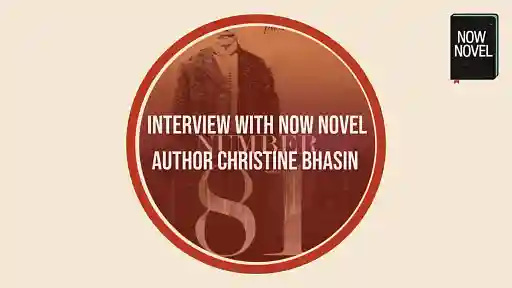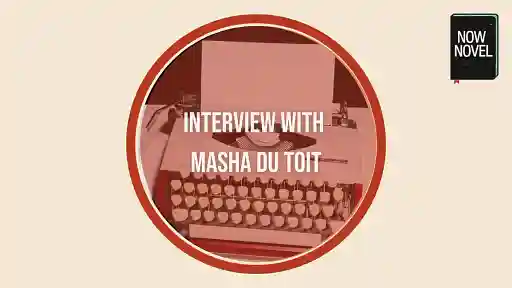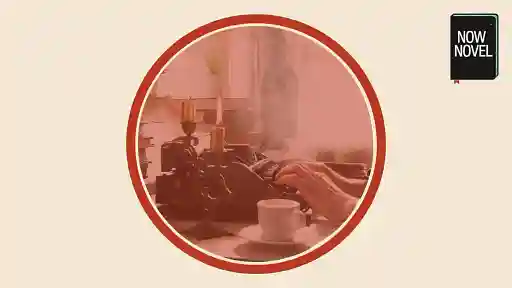Like taking a trip to Italy
Reading Romy Sommer’s seventh romance novel, My Fake Italian Marriage, is like taking a trip to Italy. It’s a novel richly redolent of the landscape, food, smells and sensibilities of Tuscany, around the hilltop medieval town of Montalcino. The novel is set on an estate, surrounded by vineyards.
And it’s the vineyards that play a central part in this story which revolves around two characters in their mid-thirties, Cleo Arendse, and Luca Fioravanti.
London-based Cleo, fresh from a breakup six month prior, is still getting over the snobbish man who dumped her.
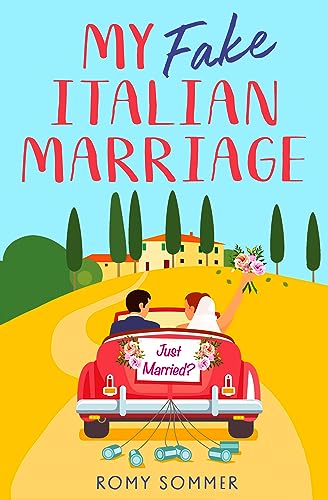
A financial analyst, she is asked by her boss to go to Italy to check on a financial investment he made in a failing vineyard. What’s meant to be a quick few days turns into something more. While there, she meets Luca, son of Giovanni, who owns and still single-handedly runs the family’s vineyard. But Giovanni has just had a stroke and is too incapacitated to run the vineyard. The trouble is that he’s been doing everything on his own. Cleo and Luca have to look into the books, and sort out the mess, and look at hiring staff, like a vintner.
This, of course, means working closely together, and even attending a trade show together. There’s an undeniable spark between Cleo with her cinnamon-colored curls and curves, and Luca with his warm brown eyes and chiselled abs. But Cleo is heading back to London soon, and isn’t going to fall for this handsome charmer. Luca, meanwhile, has played the field, but made sure to do so lightly, never tumbling into that deep-hearted love that upends a world.

Two people finding themselves
How the ‘fake Italian marriage’ fits into the title is something you’ll have to explore for yourself (no spoilers here!), but the novel is a delightful journey of two people who find themselves, in spite of themselves.
The story is also an immersion into what makes up the running of a vineyard, and here Romy’s research is woven seamlessly into the story.
The novel also skilfully shows what it’s like to be part of a large Italian family, or any family, with all that it involves – from family feuds and misunderstandings to generous lashings of love, and long, indolent lunches on terraces overlooking the Tuscan vineyards.
Sometimes there’s just a gut instinct that your story isn't working, but you don't know why, and that's a good moment to reach out to a coach, editor or writing group to get feedback.
There are also details about cooking – from how to make pasta and hand-cut it into strips, taught by the fierce-sounding Pierina, a long-time cook, and of how terroir makes a wine. The descriptions of wine are rendered below in Luca’s words:
“This is a Tignanello, an award-winning Super Tuscan wine.” Luca held up his glass, and the wine shone purple in the light. “It is made with the same Sangiovese grapes we grow here. In Latin, sanguis Jovis means the blood of Jupiter, the king of the gods.” … Luca sounded so earnest and reverential—or maybe it was his delectable Italian accent that made the words sound like poetry.
As mentioned above, Romy takes you by the hand and leads you right into the atmosphere of the region. Here is Luca again:
Luca returned to the terrace, where a lone candle in a Moroccan lantern provided the only light. He sank into one of the armchairs that looked out over the pool and garden. Fireflies danced like weak green flames against the darkness, and the steady night song of crickets filled the silence.
Each chapter is presaged by an Italian proverb which bears a relation to what occurs in it. There are some beautiful proverbs: 'The silence of a kiss is worth more than a thousand words' and 'To see and not touch is a beautiful agony', or 'Fate deals the cards, but we must play them'.

Bring your publishing dreams to life
The world's best editors, designers, and marketers are on Reedsy. Come meet them.
A sequel to The Last of the Summer Vines
Fans of Romy’s who have read The Last of the Summer Vines, a sort of prequel to this book, will be delighted to revisit some of the characters that appeared in that story. And Romy is also returning to writing about Montalcino with several more books set in the town.

Besides the difficulty of getting a winery profitable again, and indulging in the region's culinary, and other pleasures, there runs a serious thread in the novel too. Luca and Cleo are old enough, in their mid-thirties, to have experienced some shattering and suppression of dreams. As Cleo recalls:
A long, long time ago, under a very different sky, she’d dreamed of running a vineyard. For so many years, she hadn’t allowed herself to remember, but the floodgate was well and truly open now, and the memories tumbled out.
One of the themes is a discovery of these lost dreams, and how to find the courage and confidence to resurrect them. This is an uplifting thread that unites the pair in a first rate novel that will take you into the heart of Tuscany, while also, perhaps, reminding you of your own buried longings and dreams.
But, just how does Romy achieve this alchemy?
Lots and lots of research
‘Lots and lots of research,’ Romy tells me, as we talk about the genesis of My Fake Italian Marriage. I’ve just told her that I feel like I was taken on a holiday to Italy, a sorely needed break, and felt that I was steeped in the Italian atmosphere.
She smiles, saying, ‘For example, this morning I was working on the next book in this Tuscany series. I wrote 166 words on the story and then another 500 words on food. I’ve been doing research on food, so I spend a lot of time on the internet and reading books. I’ve got something I picked up in a second-hand bookshop: Walking and eating in Tuscany and Umbria.’ Romy shows me a well-thumbed copy of the guide, blistered with many post-it notes. ‘It has advice on different restaurants and what the restaurants are serving and what the countryside looks like and I just try to absorb as much of it as I can.’ She mentions that she does have Italian readers who check her spelling and other details.

Romy has, of course, been to Italy, which is also part of her research. She has an old friend living in England, and when she visits they take a trip to Italy, where Romy says, ‘I just want to sit in a cafe and watch the world go by. And eat the food.’ No doubt this soaking up the atmosphere leads to her vividly imagined descriptions of the region in her writing. She hopes to set another three novels in the region – and although each is a stand-alone, readers who have read the prequels will enjoy spotting the cameo appearances from other characters in the series.
How the series came about
The idea for the series set in Tuscany came from Romy’s editor, Charlotte Ledger. ‘I’d been in a bit of a dry spell and wasn't too sure what to write next. Charlotte said to me, ‘We've got this story idea that we think will sell well. Would you be interested in writing it?’ That story turned out to be The Last of the Summer Vines (the prequel). The publisher gave me the basics of the setting, an outline of the characters – and they specifically wanted the character in that story to be a baker, as The Great British Bake Off was doing so well. They came up with the title and gave me a bare bones outline then left me to run with it.’ Not being a cook is challenging however: ‘On my own, I would never have thought of Italy as a setting for my books and I have to admit I would never have thought of cooking and food!’
My Fake Italian Marriage has been written over the past few years, and through the pandemic. It was then that Romy hit a stumbling block. Writing about food and people having fun, with Italy suffering such heavy pandemic losses, didn’t sit well with her. As with so many of us, the pandemic left its scars. Romy found herself suffering with mental health issues such as depression, making writing uplifting romance a challenge.
She adds: ‘The other thing that I think I'm probably going to start talking more about (which I don't think women talk enough about) is perimenopause and ADHD. Nobody told me that as you get older and go through these hormonal changes your ADHD just goes haywire. So your concentration and everything is just shattered. It's been a bit of a battle working through those two things. But I've known so many people who've overcome things like dyslexia, brain injuries, depression, to have great writing careers, so I know it can be done. There are so many examples of people who've fought through difficulties and come out the other side.’
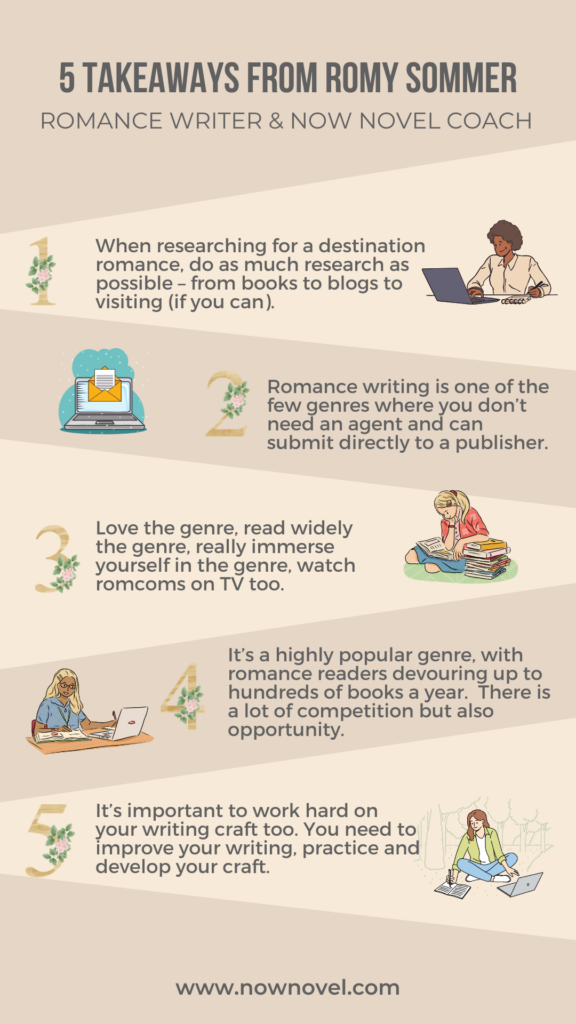
How Romy began writing romances
Rewinding to how Romy got her start in romance writing, she says that she was always a writer: ‘My whole life I was always writing little scraps of stories for myself.’ She went into film production, however, and only moved into writing romance novels and coaching writing students fulltime just over a decade ago.
She had no idea she had a feel for the romance genre until she went on a writing course where another course participant said she had a voice for romance. ‘At that time I hadn't read a romance novel since the Sweet Valley High books in my early teens. My reading was very eclectic. I read a lot more fantasy, some sci-fi and lots of historical novels. I thought, I should read some romances and find out what this genre is about. I walked into a second-hand bookstore, picked up an armful of Mills and Boons, because those were pretty much the only romance novels at the time. I remember reading them and thinking, ‘Yeah, I could write this. This doesn't look so hard. I'll do a quick, easy little romance novel as a practice novel, then I'll go back to writing historical stories, set in the Dark Ages in England, King Arthur’s time. But then I fell in love with the genre and discovered it's not as easy as it looks – because obviously there are certain reader expectations you have to meet and that takes a lot of practice.’

Looking for a book coach?
Meet vetted book coaches who can help you turn your book idea into a reality.
Advice for starting out
Her advice for starting out as a romance author is to, ‘Really immerse yourself in the genre and read it, because that's how you pick it up – almost like osmosis, you will get a feel for it. Anybody who reads a lot and immerses themselves in their genre will develop a gut instinct for what's working. Sometimes there’s just a gut instinct that your story isn't working, but you don't know why, and that's a good moment to reach out to a coach, editor or writing group to get feedback.’
Her first few romance novels were historical romances published by The Wild Rose Press in upstate New York. She describes them as a very author-friendly press, who not only gave her big break, but taught her how to brief a cover designer, how to deal with edits, and establish a media presence.
Surprisingly, romance writing is one of the few genres where you don’t need an agent, with several publishers accepting direct submissions. While Romy does not have an agent, there are agents that specialize in romance novels.
How Romy got to be published by Harper Collins is a story of luck and opportunity. She attended a UK writers’ conference where authors could pitch their stories to editors. She pitched a story to Kimberley Young, and although the story wasn’t quite right, they established an instant connection. When Romy finished her next novel during NaNoWriMo, she serendipitously saw a tweet from Kimberley saying that she was moving to Harper Collins and they were starting a new imprint. Romy decided to pitch her new novel and mentioned in her cover letter that they’d met. Because of that meeting, her submission was pushed to the top of the pile, and Romy’s was the first novel published by that imprint!
The lesson is clear, says Romy: Go to writers’ conferences, if possible and take every opportunity to pitch your story: ‘You have no idea where it might end up.’
As we say goodbye, my head is full of images of Cleo and Luca in the sunny hills of the pretty village of Montalcino, raising a wine glass to love and passion and making extraordinary dreams possible.
For more information on how to write romance read our comprehensive guide.


